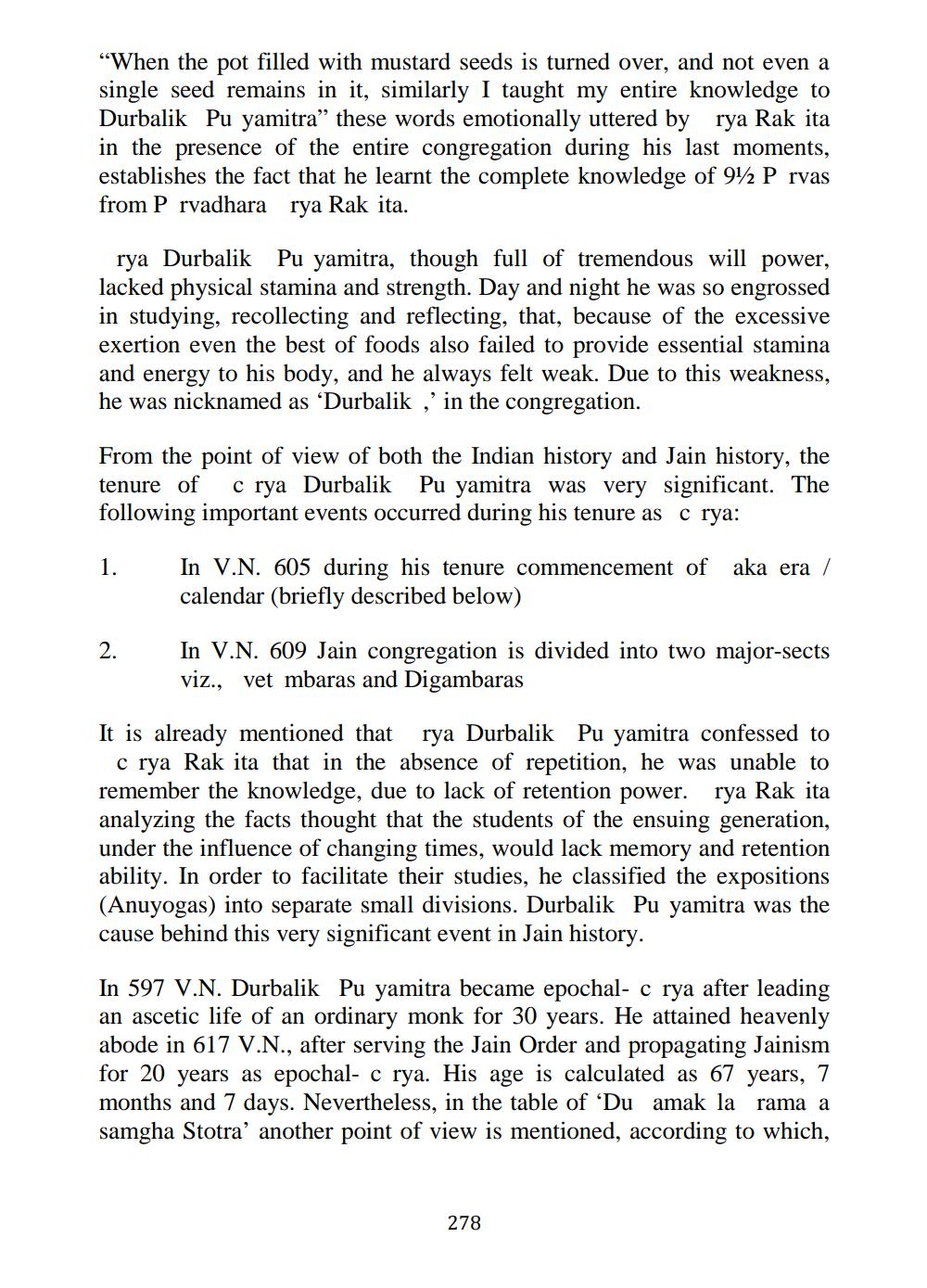________________
"When the pot filled with mustard seeds is turned over, and not even a single seed remains in it, similarly I taught my entire knowledge to Durbalik Pu yamitra” these words emotionally uttered by rya Rak ita in the presence of the entire congregation during his last moments, establishes the fact that he learnt the complete knowledge of 91/2 Prvas from Prvadhara rya Rak ita.
rya Durbalik Pu yamitra, though full of tremendous will power, lacked physical stamina and strength. Day and night he was so engrossed in studying, recollecting and reflecting, that, because of the excessive exertion even the best of foods also failed to provide essential stamina and energy to his body, and he always felt weak. Due to this weakness, he was nicknamed as 'Durbalik ,' in the congregation.
From the point of view of both the Indian history and Jain history, the tenure of crya Durbalik Pu yamitra was very significant. The following important events occurred during his tenure as c rya:
1.
In V.N. 605 during his tenure commencement of aka era / calendar (briefly described below)
In V.N. 609 Jain congregation is divided into two major-sects viz., vet mbaras and Digambaras
It is already mentioned that rya Durbalik Pu yamitra confessed to
c rya Rak ita that in the absence of repetition, he was unable to remember the knowledge, due to lack of retention power. rya Rak ita analyzing the facts thought that the students of the ensuing generation, under the influence of changing times, would lack memory and retention ability. In order to facilitate their studies, he classified the expositions (Anuyogas) into separate small divisions. Durbalik Pu yamitra was the cause behind this very significant event in Jain history.
In 597 V.N. Durbalik Pu yamitra became epochal- c rya after leading an ascetic life of an ordinary monk for 30 years. He attained heavenly abode in 617 V.N., after serving the Jain Order and propagating Jainism for 20 years as epochal- c rya. His age is calculated as 67 years, 7 months and 7 days. Nevertheless, in the table of 'Du amak la rama a samgha Stotra' another point of view is mentioned, according to which,
278




